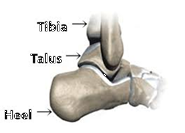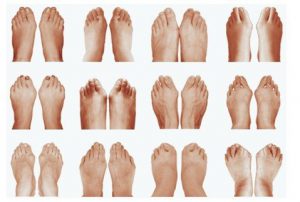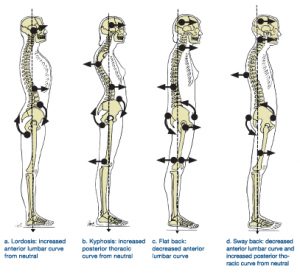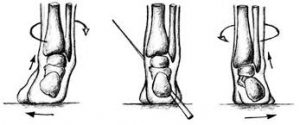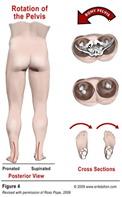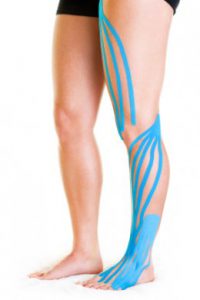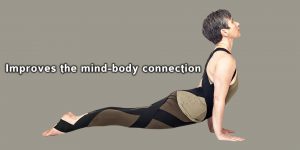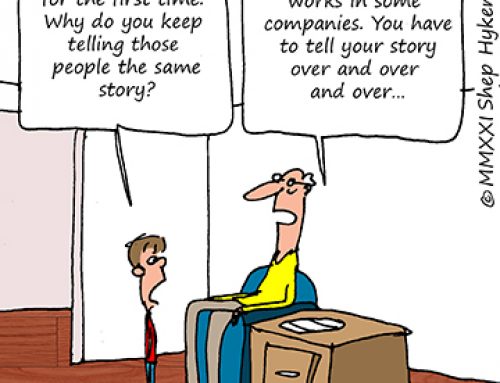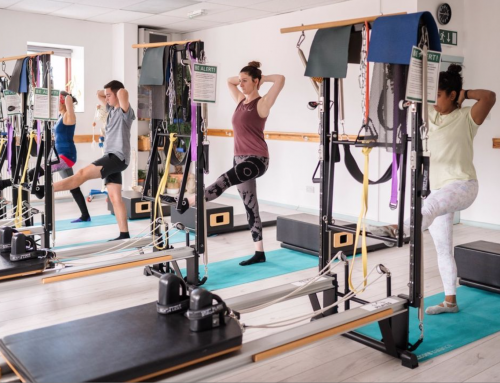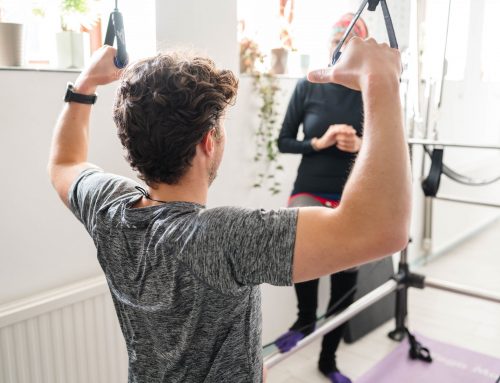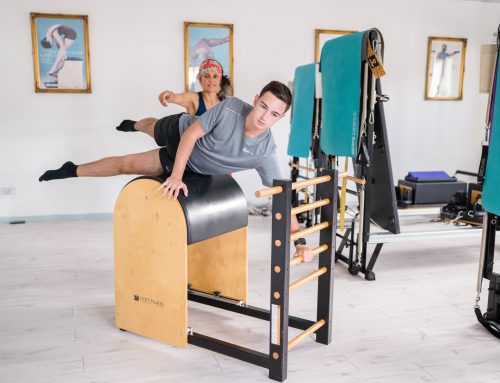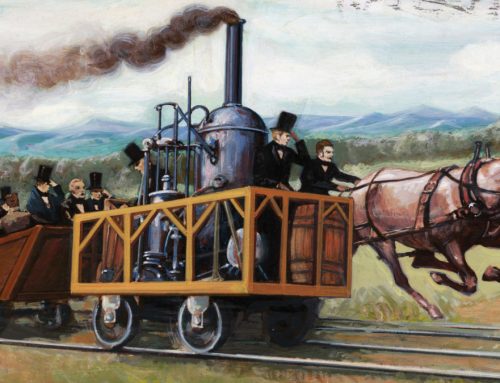The connection between feet and posture does not receive enough emphasis in the movement community. We start with it, and then forget about it as we become more obsessed with more challenging postures and sequences, and yet it’s the basis of every asana and a challenge in itself if done correctly. Our feet are not only our sensory input telling us where and how to step, but also they set up the balance of our pelvis and translate through the spine. How you use your feet has a direct influence on your core and the way we stand on our feet. How we move our feet, recruits different muscle lines up the leg into the pelvis. Bunions or halux valgus is constantly treated by being cut away only to return, we should actually be looking further up the chain and also treating the core to prevent this foot distortion.
Which one are you?
There has been a lot of recent talk on barefoot running , but research shows that most of us have jumped straight in and have hence acquired lots of injuries up and down the body due to poor movement and biomechanics patterns. Bare foot running is brilliant but we need to prepare the body and build up to this slowly. We live in a cold country and wear shoes most of the time. When I was in Sri Lanka I watched the marathon, not one person had running shoes, sneakers or trainers on, they ran through the battered streets fearless and pain free. But what they did have was excellent ROM in their knees and hips and a good stable diet were everything was cooked from scratch ensuring optimal recovery and little inflammation.
You are probably familiar with the term pronation, but maybe you were not aware that just like there are two kinds of cholesterol, there are two kinds of pronation. Normal (good) pronation is purposefully directed from the hips to unlock the foot in preparation for the heel striking the ground during gait. It enables the foot to cushion the impact. Hyperpronation (bad) has its origin in the skeletal structure of the feet. It causes the longitudinal arch to collapse and ankle to roll inward, when the foot becomes weight bearing. Notice how the body spirals naturally and imagine the spiralling load if the weight is not distributed correctly?
Hyperpronation causes an internal rotation of the lower extremities. Because the left foot in the above picture typically hyperpronates more than the right, the asymmetrical internal leg rotation typically causes the left innominate to be pulled forward and down more than the right causing an unlevelled pelvis and a functional leg length discrepancy. As these displacements cascade up the axial framework, scoliotic and kyphotic curves are exaggerated. The thoracic cage usually twists counter clockwise, the left shoulder usually protracts more than the right, and the right shoulder drops. The maxilla moves interiorly causing an overjet bite.
We refer to this gravity induced collapse as bio-implosion, and the health consequences are significant. These changes also result in an anterior shift in the body’s centre of gravity which causes an increased load on the forefoot and increased muscular activity to maintain balance and stability. Next time you replace your shoes or even flip flops, turn them over and have a look at the sole underneath and see the more worn areas , it will reveal your gait pattern.
Can you imagine the effect this has on any Yogi?
In Yoga, the feet are very important to the way we engage the body, and the well trained Yoga instructor will place proper emphasis on the feet in asana preparation. Personally, I START with the feet! Feet bring to mind metaphors for moving us forward in life and finding our sense of place and existence in the world. Yet, we give little attention to them. We squish them into poorly fitting shoes, stand for long periods of time, walk on cement pavements.
Body weight from our spine and pelvis is placed on the legs through the femur into the tibia. At the end of the tibia sits the talus. The talus has been referred to as a turtle shell with the turtle’s head looking out. Did you know….it is also the only bone in our body that has no muscle attachments! It moves according to the structures around it. Why is this important? The talus receives the body weight from the tibia, the main weight-bearing bone of the lower leg. The tibia is curved over the top of the talus “shell” with the fibula supporting the talus on one side. As the weight then transfers from the talus, it spreads through the foot. Depending on how we are moving or standing, the bones of the feet shift from the outside or inside. These shifts are dynamic and in turn shift the whole structure of our skeleton.
As we discussed earlier, many people unfortunately pronate or collapse the medial arch and roll the arch in toward the floor or even onto the floor.When this happens, the navicular drops and the talus is pulled down out of its neutral position. The whole pull of the pronated foot influences the femur to roll in and pull on the pelvis anteriorly. Now, we have an anterior pelvis on this side. You can see how if you continue to look globally, the pull continues all the way up the body. By correcting the talus position you will see the body move back into a more neutral position globally. The neutral pelvis then provides the balanced position from which to engage the deep abdominals and strengthen the core.
Yoga Poses for the Feet
Proper alignment of the feet in all poses is an important component in maintaining good foot health as well as energetically grounding to the earth. Proper alignment of the feet includes grounding though the four corners of the feet (the big toe mound, the baby toe mound, the inner heel and the outer heel), lifting the arches, and equally distributing weight between each foot. Lifting the toes towards the sky while standing helps to activate the foot muscles, lift the arches and ground through the four corners of the feet.
Yoga poses increase muscle tone and stretch foot muscles and connective tissue. Creating and maintaining muscle tone in the feet will improve overall foot health. Bringing flexibility and strength to the feet, toes and ankles can lead to overall better health and alignment for the body. By creating proper foot alignment, the rest of the body is able come into alignment. Our body reflects everything we do with our feet, therefore if our feet are in proper alignment our bodies come into proper alignment.Any pose that strengthens the lower leg muscles and feet will help improve foot problems as well as increase circulation, reduce leg cramping, help reduce swollen ankles, and create stability in the body. Listed below are a number of specific yoga poses that benefit the feet.
Virasana-Hero Pose
-Virasana is an important pose for foot health. It stretches the top of the foot and ankle while toning the sole of the foot. This pose is very therapeutic for flat feet as strengthening the muscles in the feet helps recreate the arches. Virasana also, over time, reconstructs the alignment of the tarsal bones by having pressure on the tops of the feet and allowing the toes to spread.
Vajrasana-Thunder Pose-Vajrasana has many of the same benefits of Virasana as it helps to recreate or maintain healthy arches, increase flexibility in the ankle as well as reconstruct the alignment of the tarsal bones.
Buddha Konasana-Cobbler Pose
-Baddha Konasana is a great pose for feet. While in Baddha Konasana pressing the four corners of the feet together and drawing the toes away from each other strengthens the foot muscles and activates the arches.
Squat with Toe Stretch (knees on floor)-Kneeling with the toes tucked under is a great way to stretch the bottom of the feet. This can be a very intense stretch for beginners as it breaks up tension in the sole of the foot.
Squat
(knees up, heels on floor)-Squatting with the knees up strengthens the muscles of the feet, toes and lower legs which help the overall health of the feet.
Adho Mukha Svanasana
-Downward Facing Dog-Adho Mukha Svanasana is another great pose for the feet. The feet muscles are working as your arches lift, while stretching the soles of the feet. By lengthening the plantar muscles and fascia the downward extension of the heel to the floor will develop with time.
All Standing Poses
-It is important to pay attention to the foot alignment and muscle tone in all yoga poses, especially during standing poses when the feet are not only the foundation of the pose, but also the connection to the earth grounding us energetically. Standing poses emphasize establishing a firm base of support through the legs so the spine can be relaxed, light, and free. To create proper foot alignment, evenly distribute your weight between the big toe mound, the baby toe mound, the inner heel and the outer heel. Allow the toes to spread forming a firm foundation and complete support system for your body to maintain health as well as create good posture and a firm foundation for all yoga poses.
Viparita Karani
-Legs up the wall-Legs up the wall will restore energy and oxygen to the legs and feet as it allows blood and lymph fluid that has pooled in the feet and ankles throughout the day to flow back into the body.
Below are a number of foot exercises that I have picked up from physios over the years.
More advanced feet strengtheners and stretches:
- Rolling over toes from Adho Mukha Svanasana to Urdva Mukha Svanasana.
- Big toe hold in Padangusthasana, Utthita Hasta Padangustahasana, Supta Padangustahasna, Pascimottanasana, and Upavista Konasana. Holding the big toes with the index finger, second finger and thumb pressing with the big toe while pulling with the fingers works the feet muscles.
Now a few more exercises for the feet to help wake up the feet, allow them to come alive and become more responsive to the more challenging yoga poses involving foot action. These are also a gentle way to work through some of the years of tension held in the feet.
Toe strengtheners
-Toe strengtheners can increase flexibility, muscle tone and control of the toes. From standing, drawing the big toe up and pressing the four little toes down. Draw the four little toes up while pressing the big toe down. Draw the big toe and baby toe up as you press the three middle toes down. Draw the three middle toes up while pressing the big toe and baby toe down. Singling out each toe to act as individual entities can be extremely challenging and frustrating.
Point and Flex Foot
-From Dandasana, point the toes away from the body and flex the foot by drawing the toes towards the body. This creates mobility in the ankle as well as strengthening the muscles of the feet and ankle.
Ankle Circles
-Slowly take the ankle in circles in both directions clockwise and counter-clockwise. This can be done from sitting in a chair, seated on the floor or standing. This action stretches and strengthens the foot and ankle muscles while maintaining mobility in the ankle and foot joints.
Interlace Fingers between Toes
-From a seated position, interlace your fingers between your toes. This stretches the muscles of the toes and allows them to spread. This action can be very challenging for some people due to confining shoes.
Tennis ball roll
-Roll the entire sole of the foot on a tennis ball. This helps to warm up the feet as well as breaking up any tension being held in the feet. This exercise also accesses many important pressure points on the sole of the foot. The gentle pressure on the muscles and connective tissue can relieve tension and regain fluidity.
Picking up marbles with your toes
-By using your toes to pick up marbles not only strengthens the foot muscles but also promotes the use of using toes as individual entities as opposed to a group.
Most people have to roll their legs inward in order to meet the bar evenly. But the thigh bones should be in a neutral alignment with the hip joint. What I mean by the contrasting work of the hips and spine is the inward spiral of the feet with an outward rotation of the hip. It creates a strength pattern from the feet to the pelvis.
Some people have compensated forefeet, their metatarsals don’t meet the ground in an even transverse arch. The metatarsals and toes bow or tilt toward or away from the mid line. The big toe may be higher than the little toe or the opposite, the little toe higher than the big toe when the talus is in neutral. This is due to years of walking around with the talus not in neutral. If the client has this compensation, teaching them foot corrective exercises can improve the function of the foot and in turn change their pelvic position.
Simply stated, the feet can be compared to the foundation under a building. If the foundation sags, so does the building. A forward leaning, head forward posture is common among 80% of your clients. People are and look off balance. Maximal stresses are placed on the body just from standing and walking. Over time damage is done to joints, ligaments and muscles.
Conclusion
If we paid more attention to our feet we may lessen back issues, hip and knee pain, release our necks and improve our yoga asana. Feet love walks, rubs, movement and attention. Give your feet the appreciation they deserve and your body will be happy and healthy. Strengthening and stretching the foot and lower leg muscles along with wearing properly fitted shoes will maintain muscle tone in the feet and prevent future foot problems from occurring. It will also begin to reduce current foot problems. By practicing yoga poses that strengthen and stretch the muscles, joints and connective tissue of the foot and ankle, your foot health, posture and overall health will improve. Your body reflects the health of your feet; therefore happy, healthy feet result in a happy, healthy body. Treat your feet well and your body will appreciate you.

